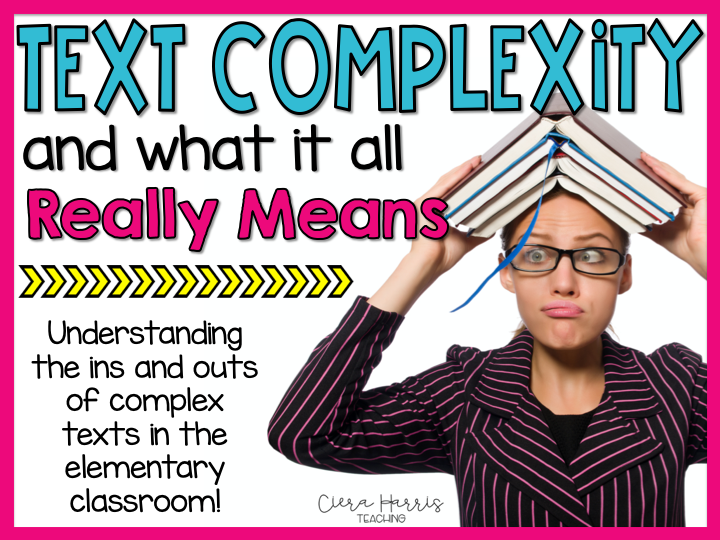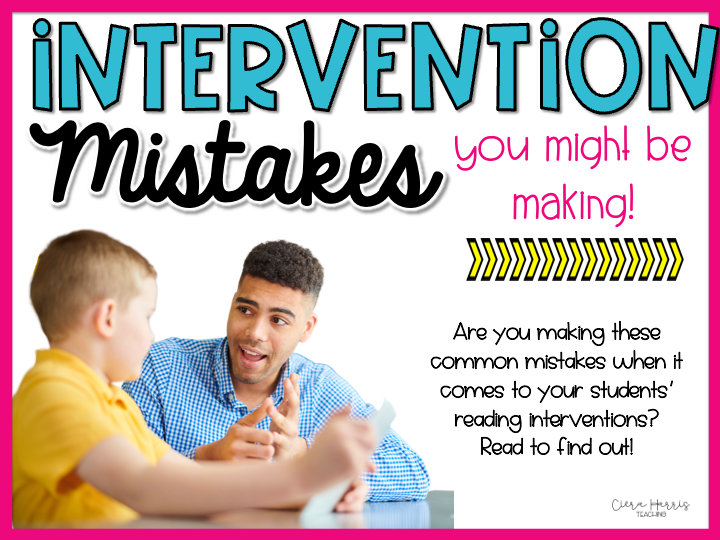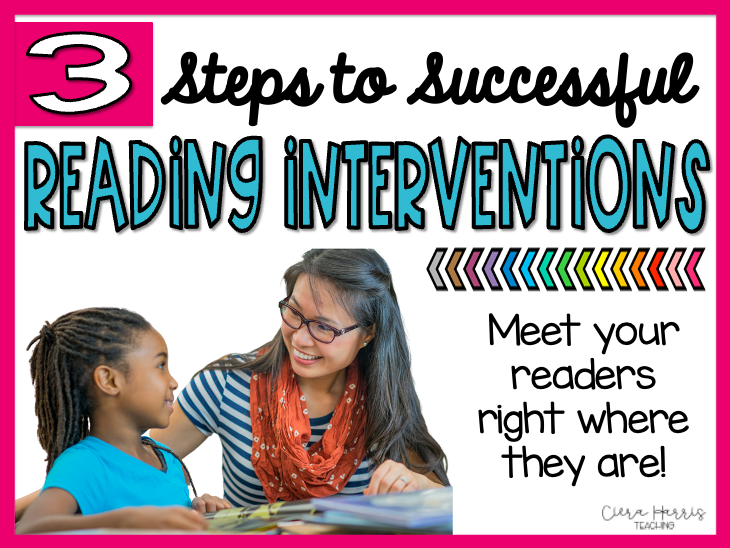Have you looked at your standards lately? I bet if you did, you probably noticed the words ‘complex text’ in there somewhere. This vague term has made its way into the Common Core Standards as well as many other state standard lists, too! Unfortunately, the standards don’t go into too much detail about what that term really means! That leaves it to the teachers to figure it all out! So let’s dive in! Let’s chat about text complexity and what it all really means!

Want to watch the video instead? Check it out below! Make sure to subscribe to get updates on all new content!
So it’s important to understand WHY our standards have started to use this term in the first place. Collages were finding that a vast majority of their students were coming to them not able to read at the capacity needed for collegiate texts. This information then trickled down into high schools to try and get our students ‘college & career ready’. And BOOM, then it ended up in our state standards.
But just because it’s in the standards list, doesn’t mean that there’s enough information given to help the issue! In fact, there isn’t! Many teachers are still very confused at what constitutes a ‘complex text’.
What is Text Complexity?
Unfortunately, there isn’t a black and white definition of what a ‘complex text’ actually is. It’s based upon multiple factors and those factors change from situation to situation, not allowing us to concretely define this term.
The text complexity varies from reader to reader. A text can be complex for one student and not complex for the other. It’s hard to identify whether or not one specific text is truly complex. As adult readers, we know when a text is a complex by using our metacognition. As we read, we find ourselves needing to slow down, reread, define words, clarify information, and do ‘extras’ in order to understand the text. But what about students? Can they do this?
Inside of a text that would typically have a high text complexity, we would find a few consistencies:
- more implicit meanings of concepts
- the use of unconventional text structures (flashbacks, flash-forwards, multiple points of view)
- figurative language and unfamiliar language (academic or domain-specific)
- has a literal meaning that is intentionally at odds with the underlying meaning (the purpose of the text is hidden)
Want to snag this FREE Text Complexity Rubric? Just enter your email address below and I’ll send it right over!

How to Measure Text Complexity?
So because there’s not a concrete definition of what constitutes a complex text, each text needs to be measured individually. But how?
There are 3 (technically 4) parts to measuring text complexity: analyzing the qualitative data from the text, analyzing the quantitative data from the text, and analyzing the reader  & task. Each of these components measures different pieces.
& task. Each of these components measures different pieces.
- Qualitative Data: This refers to the data that’s in the actual words and language. This isn’t something that a computer can measure. It’s all about the text structure being used, the clarity of the language and conventions. It also includes the vocabulary difficulty and the knowledge demands on the reader.
- Quantitative Data: This refers to the data that can be counted (think numbers/quantity). Here we’re referring to the sentence length, the number of words or syllables, word frequency, etc. This is what the Lexile Level is all about! (And is also why we can’t justify using Lexile as a sole determining factor for leveling texts!)
- Reader & Task: This final component refers to two parts. First, the reader at hand. Who will be reading the text? What knowledge do they possess? What language do they speak? Each text can be a varying complexity level from reader to reader. And then finally, the task that is paired with the text itself adds to the complexity level. What is the reader being asked to DO with the text?
When Thinking About Text Complexity:
Always read the text before presenting it to students! In order to know if the text is complex, you have to give it the time needed to read it yourself and think about the above factors and how they will impact your readers.
Also, consider your targeted standards and curricular goals. How does the text you selected support them? Not every text will support the objectives you wish to focus on.
And finally, does the text provide opportunities for students to examine and analyze thoroughly, make inferences, uncover new insights, etc? How is the text going to challenge their thinking? If you know that is won’t, then the text complexity isn’t high enough.
How Can I Help My Students Read Complex Texts?
There are lots of ways you can support your students through reading complex texts!
- Use an anchor text to model the given comprehension skill/strategy you’re wanting them to work on
- Set a purpose for reading & work on improving the students’ first read (read for the gist)
- Teach them to reread and focus on close reading
- Spotlight text evidence
- Push for more writing during reading
- and simply read MORE!
So as you can see, text complexity isn’t as simple as we’d like it to be. But it is super important for teachers to understand! Hopefully the information above and the free rubric will be helpful! Want to save the post for later? Make sure to pin the image below!






